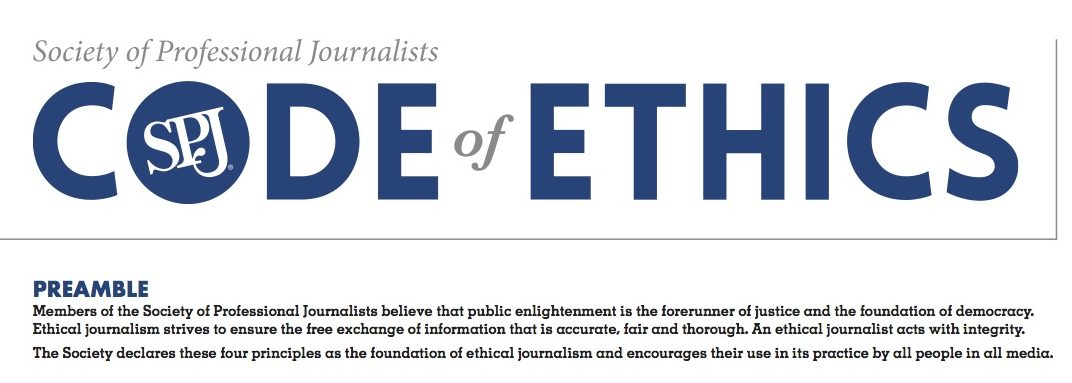It’s actually easy to tell real journalism from fake news. Here’s how
Fresno Bee, April 28, 2017
The fuss over fake news continues to unfold. In February President Trump accused The New York Times, NBC, ABC, CBS, and CNN of being fake news and the enemy of the American people. This week he said the “fake media” were falsely reporting that he had changed his position on the Mexican border wall. He also explained away recent reports about his low approval ratings as “fake news.”
 President Trump seems to think that stories he doesn’t like are phony. But truth is independent of our desires. Not liking something does not make it false.
President Trump seems to think that stories he doesn’t like are phony. But truth is independent of our desires. Not liking something does not make it false.
Journalists – like everyone else – have biases and opinions. But there is an important difference between biased stories and bogus ones. Every story has an angle. But objective reporting rests firmly on the ground of facts. Legitimate news organizations avoid lies and fabrications.
The objective truthfulness of real news provides the template that fake news imitates. Fake news stories are counterfeit. They look like real news. They appear to provide objective facts. But they do not. Rather, they try to sell us something.
Infomercials are fake news. Internet “click bait” is fake news. Newspaper advertisements written to look like news reports are fake news. The tabloids lining the grocery store checkout are fake news. Political propaganda is fake news.
Professional journalists do not produce fake news. The journalist’s code of ethics has four guiding ideas. Seek truth. Minimize harm. Act independently. And be accountable and transparent.
Mainstream news organizations sometimes exaggerate with attention-grabbing headlines and titillating teasers. But real journalists want to get the facts right. When they get things wrong, they admit it – or get fired.
It is not always easy to differentiate fake news from real news. That’s why we need substantial training in media literacy. We need to teach kids how to read a newspaper and how to avoid being suckered by online click bait. Kids need to learn the difference between objective news reports, the opinion page, commercials and outright propaganda.
We all need to understand that YouTube and other Internet sources offer suggestions based upon what the computer thinks we want to see. Some tech firms are proposing a technological fix for this particular problem. Google and Facebook are working to combat fake news by changing how search and news notification functions work.
The technological fix is good. But the problem of sorting out fact from fiction will remain with us. Fake news is an ancient problem. Socrates was executed because false rumors were spread about him. Charlatans and quacks have always taken advantage of the gullible and the ignorant.
Wisdom teaches skepticism and self-restraint. A story that is too good to be true is likely not true. We are often beguiled by our biases. We want to believe things that flatter our egos and reinforce our deepest beliefs. Psychologists call this “confirmation bias.” But wanting something to be true does not make it so.
So while technological solutions can help reduce the proliferation of fake news, the real solution is critical thinking and self-examination.
The most obvious key is to seek out multiple sources of information. You should also compare what you read or hear against commonly held background knowledge. Critical media consumers also ask some of the following questions:
▪ Who is speaking, what is the source of their authority, and what biases do they have?
▪ Is the story trying to sell me something or advance an agenda?
▪ Who is the intended audience? What is included in the message or left out?
▪ How does this story connect to other things I already know?
▪ What more would I need to know to evaluate this properly?
These kinds of questions should guide our reading of books, our evaluation of scientific reports, and our understanding of speeches, sermons and sales pitches. The process of sifting and winnowing is liberating and edifying. Critical thinkers make informed decisions in all aspects of their lives.
Critical thinking is essential for citizens in a democracy. In order to effectively participate in the project of self-government, we need to be able to distinguish between the phony and the factual. Let’s hope that the fake-news furor stimulates a renewed commitment to media literacy, objective reporting, and basic common sense.
http://www.fresnobee.com/living/liv-columns-blogs/andrew-fiala/article147400744.html


